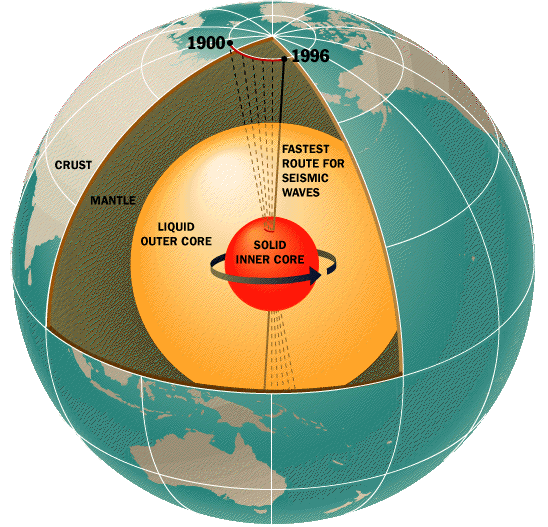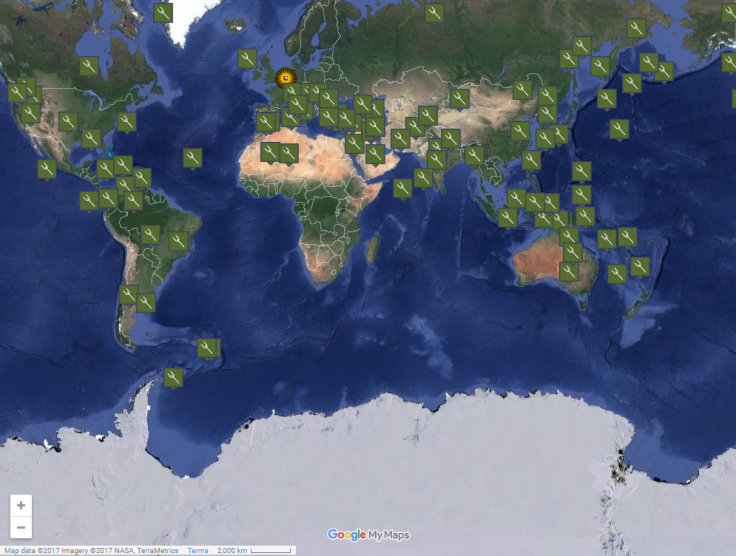'Atlas of the Underworld': Scientists are mapping out a hidden world buried deep within the Earth
The massive interactive map tracks 94 ancient tectonic plates buried deep within the Earth's surface.

The Earth is home to a hidden world buried deep within the planet's surface. No, it is not a version of hell as described in religious texts, instead, the underworld is made up "dead" tectonic plates, which were once the Earth's surface but over time have been pushed deep into our planet's core. This hidden world has actually been mapped by scientists, in what is now being called an "Atlas of the Underworld".
The tectonic plates, called "slabs", float on the Earth's mantle, moving independently. However, the crushing and spreading apart of the slabs caused by earthquakes, continental drifts and other such events – a process called subduction – can result in one plate sliding beneath another and pushing one section into Earth's mantle. Some of these dead tectonic plates go down up to around 2,900 Kms below the Earth's surface.
However, now Dutch scientists Douwe van der Meer, Douwe van Hinsbergen, and Wim Spakman of Utrecht University have mapped 94 ancient tectonic plates in the mantle, connecting them to dates of geological events that occurred while they were still on the Earth's surface. While some of the plates under subduction around 300 million years ago, others were traced to active faults like those along the US west coast.
The scientists used a kind of CT scan of the Earth, using seismic waves to locate these slabs at various depths. "This is the first time that the slabs all over the world have been mapped," said Wim Spakman. It took the researchers nearly 15 years to gather geology data from across the world, spanning hundreds of millions of years to construct the underworld atlas. "Much of the information was already available, but mostly in the form of more or less isolated research projects. We have put all the pieces together, rather like a jigsaw," Spakman added.

"The Atlas of the Underworld is a significant achievement linking the present structure of the Earth's mantle to our planet's plate tectonic history," Jonny Wu of the University of Houston, who wasn't involved in the underground atlas research, told ArsTechnica. "Like a human genome map, this will undoubtedly provide a platform for many future discoveries about our planet."
Practical applications for the map
Apart from providing an accurate image of the location, depth and age of the slabs and how they are linked to mountains and active or inactive volcanoes, the atlas can also help shed light on the evolution of the Earth's mantle. Researchers are also using the map to develop new methods of detecting ore deposits. One of the researchers, Van de Meer, used the map to calculate how much carbon dioxide has been emitted by volcanoes in the past.
The researchers are still uncovering more data to add to the atlas of the underworld. They have already reportedly identified slabs 95 and 96. "We have found two more in the eastern Mediterranean region. This will be published in the next year and will be added to the Atlas," said van Hinsbergen. "In the deep mantle below Antarctica, there may be a few extra slabs—our models seem to suggest so and it makes geological sense, but the current tomography models have insufficient resolution to make a convincing case."
Lack of surface geological data in some regions is also causing some delays. "In Southeastern Australasia, in the deeper lower mantle, we do see more slabs; however, there isn't sufficient geological literature available to date these," said van der Meer. However, the researchers are hopeful that more data will eventually flow in.
"Worldwide geological research will undoubtedly yield data that show that some of our interpretations need to be adjusted. We welcome new information and have set up a website where anyone is able to view our geological interpretations, and to which colleagues who wish to make any corrections can provide feedback. That will help us make the atlas even more accurate," Van der Meer added.
The research paper detailing the results of the study has been published in the journal Tectonophysics.






